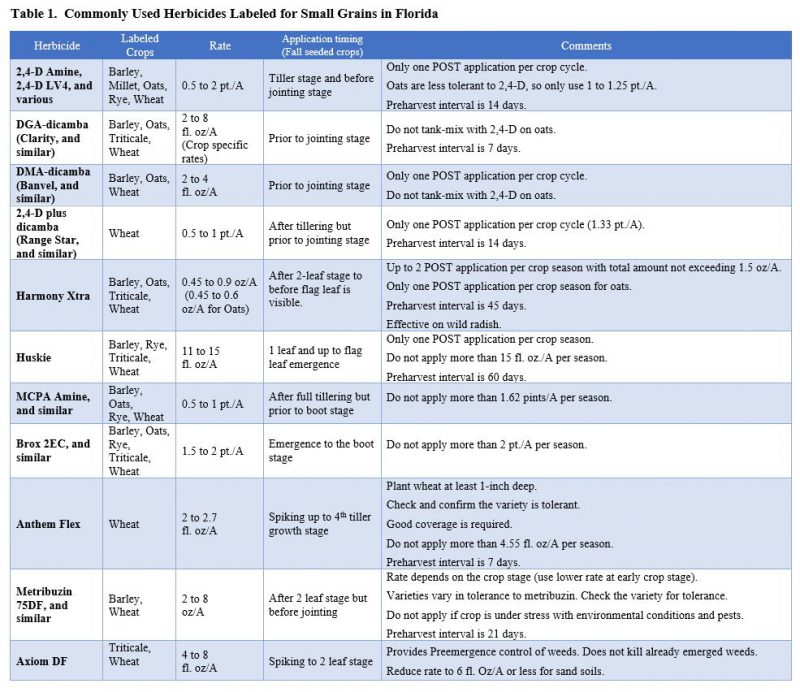Pratap Devkota, Weed Scientist, UF/IFAS West Florida Research and Education Center
–
Small grain crops such as barley, oats, rye, triticale, wheat, etc. are commonly grown during winter months in Florida for grain, cover crops, or winter grazing purposes. Even though these grass crops grow in the cool-season, there are a number of troublesome weeds that reduce productivity.
–
Lately, I have received a number of questions on the herbicide options for weed control in small grains. In general, questions are related to certain crops, and specifically the available herbicide products to choose from. Likewise, there are questions on the crop stage and herbicide application timings. In many instances, the herbicide product is labeled for one or some small grains species, but not for all. Selecting a safe product can be a challenge for small grains planted in mixtures for winter grazing because many herbicide products may not be safe on all the species planted in the mixture. For example, in an oats and rye (or similar) mixture, a herbicide product may be safe on rye but not for oats and vice versa. When considering various crops and herbicide products, it is important to know the information on herbicide label and choose appropriate product (s) that are safe on the targeted crop species.
The table below provides summary information on some common postemergence herbicide products, crops labeled, application timing, etc. for use on small grain crops in Florida. Note: There are several other herbicide products labeled for small grain crops, but they may not be registered for sale in Florida. Please read herbicide product label carefully and follow the details included in the label. (Use mouse to click on Table 1 for full screen viewing.)
Some considerations for applying herbicide effectively in small grain crops:
- Tank-mixing herbicide products from different mode of action groups is a good practice from herbicide resistance management prospective.
- Make sure that tank-mix herbicides are compatible and safe on target crop species.
- Use adjuvants and surfactant as recommended on product labels to optimize herbicide efficacy.
- Consider crop health and environmental conditions while applying herbicide. If crop is stressed from frost, cold, wet field conditions, disease, etc. then there is greater potential for crop injury from herbicides.
- Spray when weeds are still small for the most effective control. Weeds larger than 3 or 4-inches are tougher to kill.
- If herbicide application is intended for small grains planted for winter grazing, then you must also follow the grazing restrictions on the herbicide label.
–
Further information on weed control in small grains can be found by using the following links:
-
Weed Control in Small Grain Crops: Start Sooner Rather than Later
-
Weed Management in Small Grains Harvested for Grain


